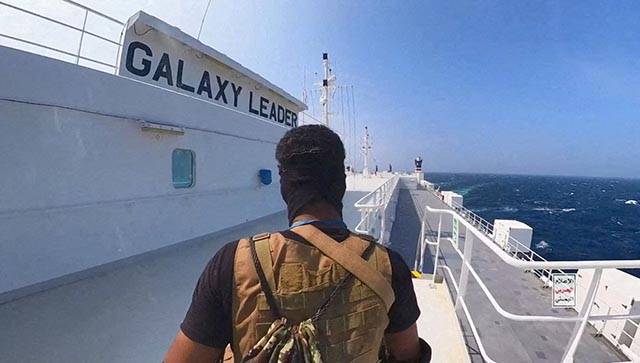In the turbulent waters of the Red Sea, a US-owned vessel, the Gibraltar Eagle, has become the latest target of Houthi attacks, emphasizing the group’s persistence and determination.
The Houthi rebels, officially known as Ansar Allah, emerged in the 1990s as a Shia armed group in Yemen. Founded by Zaidis, a minority within the Shia Muslim community, the Houthi movement has its roots in religious and political discontent, as well as opposition to the corrupt rule of Ali Abdullah Saleh, who amassed immense wealth during his three-decade-long reign. Religious and political motivations The Zaidis, followers of the Zaidi sect within Shia Islam, felt threatened by the spread of Wahhabism in Yemen during the 1980s and 90s. This Islamic school of thought, associated with Sunni Islam, fuelled concerns among Zaidis that their religious identity and sect might be at risk of extinction. To address these concerns, the Houthi movement took shape, initially forming the Al-Haqq Party and initiating educational programmes for Zaidi youth. In the early 2000s, Saleh’s alignment with the United States during the War on Terror and the invasion of Iraq further fuelled discontent among the Houthi ranks. The radicalisation of their youth led to slogans like “Death to America, Death to Israel.” In response, Saleh launched military campaigns against the Houthi rebels leading to the death of their leader Hussein al-Houthi, in 2004. Arab Spring and shifting alliances The Arab Spring in 2011 saw the Houthi rebels participating in protests that eventually led to the ousting of Saleh. However, the dynamics changed in 2014 when Saleh’s successor turned against the Houthi movement leading to a strategic alliance between Saleh and the rebels. Together, they waged a civil war that resulted in the Houthi takeover of Yemen’s capital, Sanaa, in 2015. The Houthi rebels have declared allegiance to Iran receiving support in the form of cheap oil, funds and weapons. The strategic partnership allows the Houthi movement to challenge Saudi Arabia and the UAE while further complicating the geopolitical landscape of the region. Led by Abdul Malik al-Houthi, the Houthi rebels remain a mysterious force. Abdul Malik succeeded his brother Hussein and has become more daring in their attacks, targeting not only sites in Saudi Arabia and the UAE but also US-owned vessels in the Red Sea. The ultimate goal of the Houthi movement is to protect Zaidi interests in Yemen, rule the entire country and challenge regional powers like Saudi Arabia. While Iran claims its support for the Houthi rebels is political, evidence suggests a deeper connection including the provision of sophisticated weaponry. The relationship between Iran and the Houthi leadership is not one of direct control; rather, it resembles the complexity seen in the Taliban’s relationship with Pakistan. Iran may influence the Houthi rebels, but the leadership, goals and operational scope remain distinct. The Houthi insurgency in Yemen is a multifaceted conflict rooted in religious, political and geopolitical factors. The group’s origins, motivations and international connections highlight the intricate nature of the crisis. As the attacks continue in the Red Sea, understanding the dynamics of the Houthi movement becomes crucial for comprehending the broader geopolitical landscape in the Middle East. Views expressed in the above piece are personal and solely that of the author. They do not necessarily reflect Firstpost’s views. Read all the Latest News , Trending News , Cricket News , Bollywood News , India News and Entertainment News here. Follow us on Facebook , Twitter and Instagram .
)